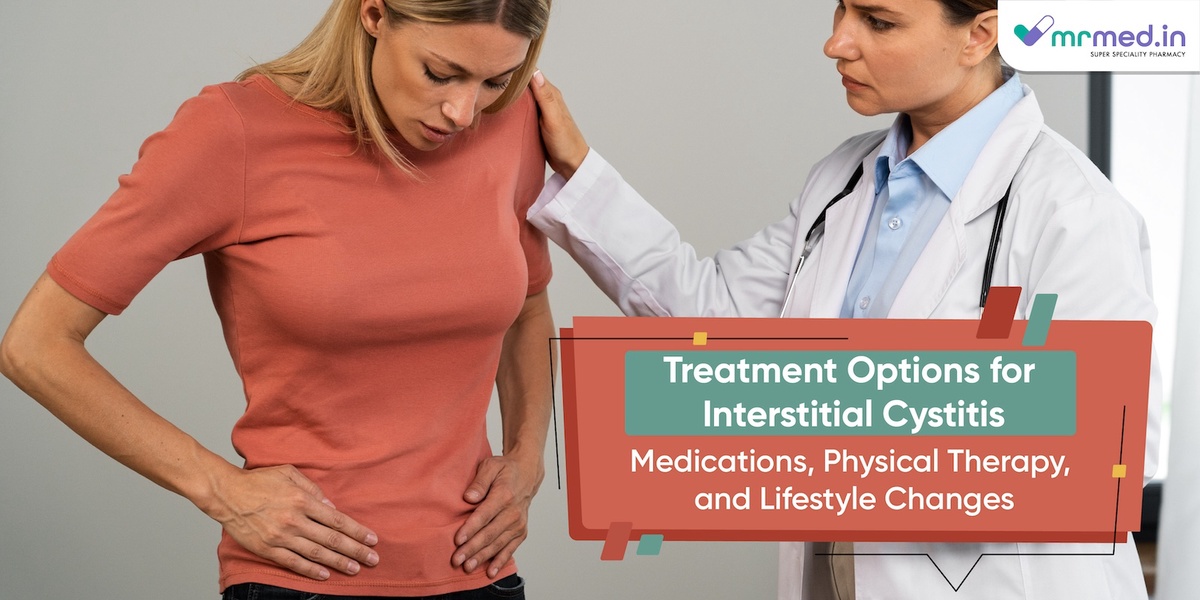Interstitial cystitis (IC) can be challenging to manage because what works for one person might not work for another. The exact cause of IC is still unknown. In India, it affects roughly 1 to 5 people out of every 10,000. Despite the challenges, several treatment options are available to help reduce symptoms and improve the quality of life for those with IC. In this article, we will explore these treatment options.
What is Interstitial cystitis?
Interstitial cystitis (IC) is a condition where the bladder becomes very sensitive, and this sensitivity is not due to an infection or other common causes. The main signs of this condition include pain in the lower belly area and a very frequent need to pee, sometimes as often as 60 times a day.
What causes Interstitial cystitis?
The exact reason someone gets interstitial cystitis is not apparent, but it could be linked to allergies, problems with blood vessels, issues with the body's immune system, or problems with the bladder's lining. Sometimes, certain substances in the urine or uncommon infections might also play a role.
Management of Interstitial cystitis
No simple treatment helps with the management of interstitial cystitis. Your doctor may suggest a combination of various therapies to find a suitable approach that will reduce your symptoms.
1. Lifestyle Changes:
- Eating and Drinking Habits: Some people find that certain foods or drinks can trigger their IC symptoms. It's essential to pay attention to what you eat and drink and notice if any specific items worsen your symptoms. Drinking enough water is also crucial to staying hydrated.
- Quit Smoking: Smoking can make IC symptoms worse for some people. If you smoke, quitting can be beneficial not only for your bladder health but also for your overall well-being.
- Stress Reduction: While stress might not directly cause IC, it can trigger symptom flares. Finding ways to reduce stress, such as relaxation techniques, listening to music, or engaging in gentle activities, can help manage symptoms.
- Physical Activity: Although it might seem counterintuitive, being physically active, even with gentle exercises like walking or stretching, can help relieve symptoms for many people with IC.
2. Bladder Training:
Bladder training aims to help your bladder hold more urine, reducing the frequency of bathroom visits. Keeping a bladder diary can help track your progress, and gradually increasing the time between bathroom trips can train your bladder to hold urine for more extended periods.
3. Bowel Training:
Some individuals with IC find that regular bowel movements can help alleviate symptoms. Your doctor might suggest bowel training techniques to help establish a regular bowel movement schedule.
4. Physical Therapy:
If IC symptoms are accompanied by pelvic floor muscle spasms, physical therapy with a specialized therapist can help. The therapist will work to stretch tight pelvic floor muscles and teach relaxation techniques to keep them relaxed.
5. Medications:
Over-the-counter pain medications like acetaminophen, aspirin, or ibuprofen can help control mild bladder pain. For more severe pain, your doctor might prescribe stronger pain medications like Pentosan polysulfate sodium (Cystopen 100mg capsule). This medication also helps reduce irritation and inflammation in the bladder, reducing the symptoms associated with IC, such as pelvic pain, urinary urgency, and frequency. However, it is essential to discuss any medications, including potential side effects, with your doctor.
6. Bladder Instillation:
Some people find relief from bladder instillation, where a doctor introduces a liquid medicine directly into the bladder via a catheter. This treatment aims to ease irritation of the bladder wall and can be done regularly over several weeks.
7. Bladder Stretching:
Bladder stretching, also known as hydrodistention, involves filling the bladder with fluid to stretch it temporarily. While this procedure might provide short-term relief for some individuals, it's not fully understood why it works.
8. Surgery (In Extreme Cases):
For a small percentage of individuals with severe and unmanageable symptoms, surgery might be considered. This could involve making the bladder larger, removing the bladder (cystectomy), or rerouting the flow of urine (urinary diversion). However, surgery is typically considered only after all other options have been exhausted.
Conclusion
Managing IC involves a combination of lifestyle changes, therapies, and medications tailored to individual needs. Finding the right treatment plan may take time. Still, with guidance from healthcare professionals, many people with IC can experience relief from their symptoms and improve their quality of life.


No comments yet